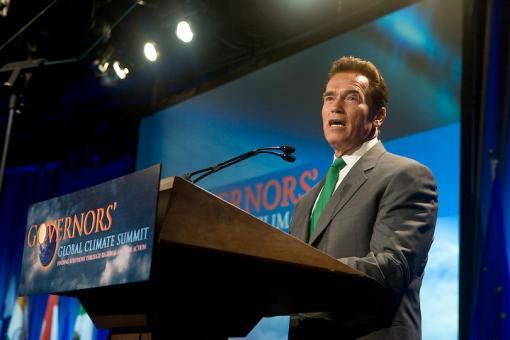 The pictures in the report tell a graphic story – they show the historical temperature rise in California from 1961 to 1990, and then give future projected rise from 2035 to 2099.
The pictures in the report tell a graphic story – they show the historical temperature rise in California from 1961 to 1990, and then give future projected rise from 2035 to 2099.
Progressively the state gets redder and redder, especially in the South East corner and middle. It’s going to get hot.
California prides itself being the first when its comes to clean air and energy, and now it has become the first state to publish a multi-sector strategy on how to adapt to climate change
The 2009 Adaptation Strategy Draft summarizes the latest science on how climate change could impact the state, and the results aren’t pretty.
For those who live with their hands in the sand and continue to deny that climate change is happening the draft makes uncomfortable reading.
It states: “Climate change is already affecting California. Sea levels have risen by as much as seven inches along the California Coast over the last century, increasing erosion and pressure on the state’s infrastructure, water supplies, and natural resources.”
California also admits that the state has also seen increased average temperatures, more extreme hot days, fewer cold nights, a lengthening of the growing season, shifts in the water cycle with less winter precipitation falling as snow, and both snowmelt and rainwater running off sooner in the year.
The predicted impacts are serious: The sunshine state could soon be baking in temperatures of over 100 heatwaves. Forest wild- fires are becoming more frequent and intense due to dry seasons that start earlier and end later. The state’s water supply, already stressed under current demands and expected population growth, will shrink under even the most conservative climate change scenario. Almost half a million Californians, many who do not have the means to adjust, will be at risk from sea level rise.
California admits that as the climate changes, so must California, with the aim of reducing the vulnerability of residents, resources and industries. It is proposing strategies to cope with threats in seven sectors from firefighting to public health and water conservation.
The draft is “a good step in the right direction,” argues Gina Solomon of the Natural Resources Defense Council . “It highlights the importance of local adaptation planning, protecting vulnerable communities and the importance of public education.
But she cautioned: “These are all just words on paper without funding to carry them out.”
Let’s see what the public has to say about it.

water conservation should be done because we are already having some water shortage these days””